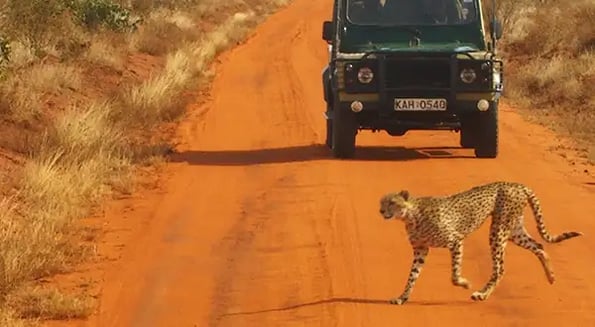Wealthy foreigners have “gone on safari” in Africa since the 1800s.

As tourists abandon rustic rhino-hunting for sustainable sightseeing, tour operators are constructing a new version of Africa for today’s tourists — and it’s built on imported Tesla batteries instead of imported rifles.
It’s time for… (*enthusiastic marketer leads drumroll*)… a rebrand!!
Theodore Roosevelt and Ernest Hemingway went to Africa to kill its elephants; Prince Harry and George Clooney go to save its people. But some things never change: Celebrities who safari want to do it in style.
So, to attract celebrities with progressive preferences, tour companies are buying electric safari vehicles, building sustainable lodging, and focusing on eco-tourism.
But it’s still not exactly accessible to everyone…
Like people who actually live in Africa, for instance.
Most safari packages still start at prices of $750 per person per day — and can cost several thousand dollars depending on the level of luxury.
Like the lavish hunting expeditions of the Roosevelt era, these over-the-top eco-excursions are still geared toward wealthy foreigners, not local Africans.
Sustainability itself is a win. But the fact that tour companies prioritize the environment for tourists — while members of the African middle class, who often can’t afford safari vacations, don’t share that commitment — shows that the impact of new, green safaris is complex.

